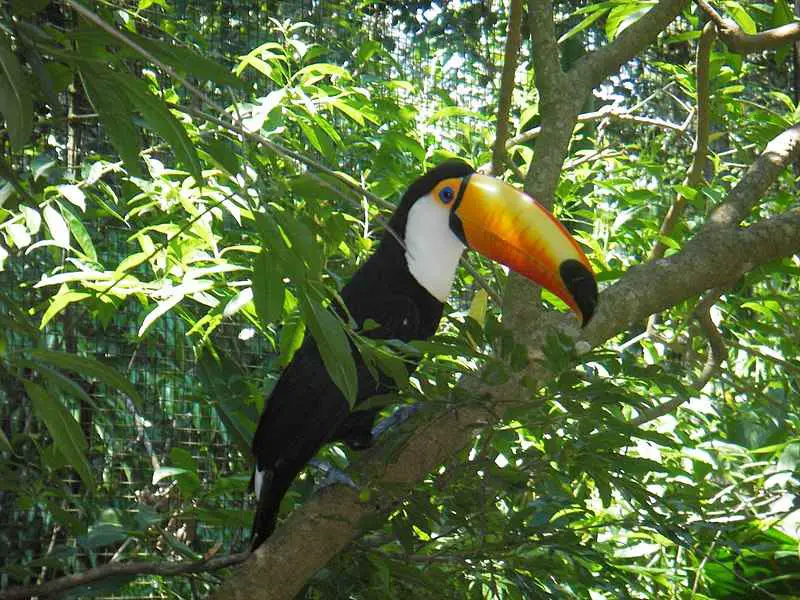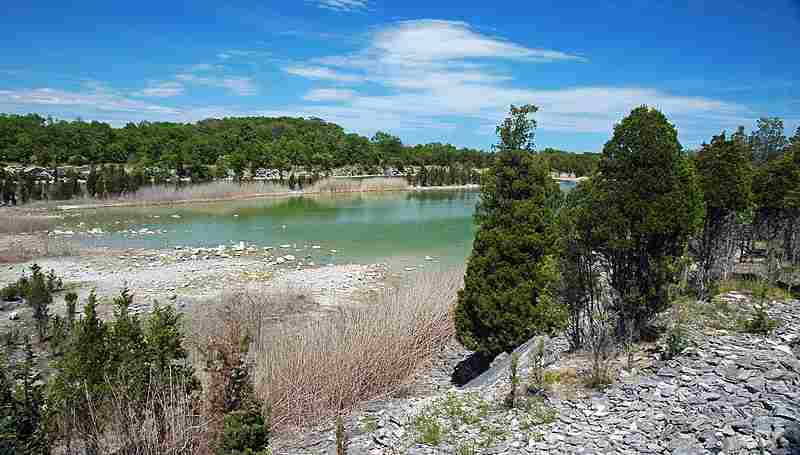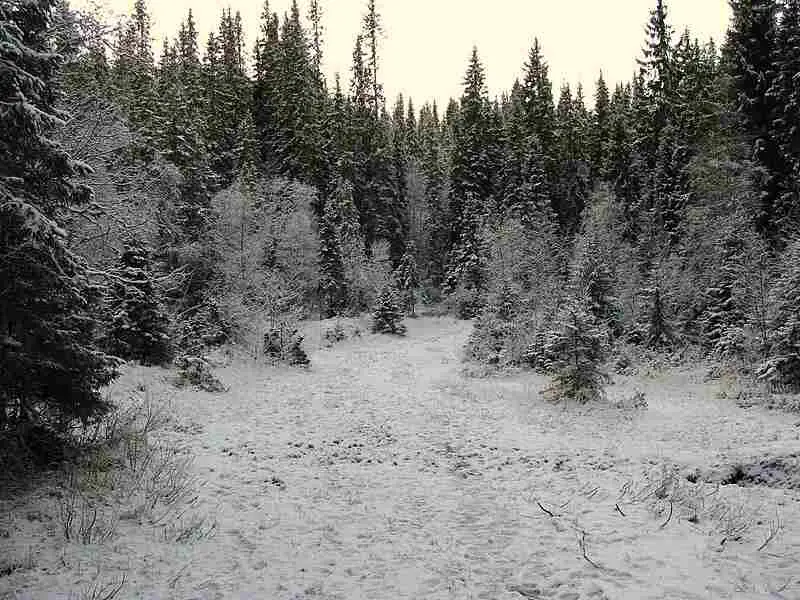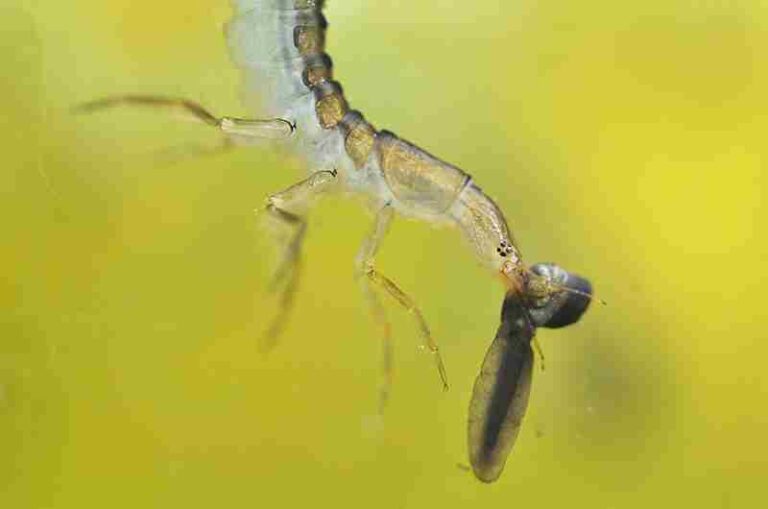5 Characteristics of Tropical Rainforest Ecosystem Discussed
Characteristics of tropical rainforest ecosystem are; warm-humid climate, high precipitation, complex vegetative structure, low-fertility acidic soil and high biodiversity.
This article discusses the characteristics of tropical rainforest ecosystem, as follows;
1). Warm-Humid Climate (as one of the Characteristics of Tropical Rainforest Ecosystem)
The characteristics of tropical rainforest climate, include warmth and humidity.
Various factors contribute to the warm and humid climatic conditions of the tropical rainforest; including near-equatorial geographic location, dense vegetation, and high amounts of rainfall.
Due to their climate, tropical forests boast of high species-richness and biodiversity; with numerous species of rainforest plants and animals being well-documented and studied.
In the area of temperature, tropical rainforests experience a range of temperatures from about 20-30°C (or 35°C in some cases), with an absolute average of 25°C [2].
This is relatively high, and is accentuated by the fact that diurnal and seasonal variations are minimal.
Humidity in the tropical rainforest is also relatively high, and can be attributed to the abundance of precipitation, solar thermal energy, and vegetation; which interact to produce a convective hydrological cycle of continuous water-recharge and evapotranspiratory-recycling.
As implied by the name, rainforests receive abundant rainfall compared to other terrestrial ecosystems like grasslands and tundras.
The temporal (time-based) distribution of rainfall across a year is also relatively even, so that there is no distinctive or intense, dry season in a tropical rainforest. On the contrary, precipitation and humidity are constants at virtually every period of the year, with only slight changes in intensity.
Warmth and humidity of tropical rainforests serve as effective ingredients to support a wide range of plant species, which are trophic producers and micro-habitats that in turn support diverse animals in higher levels of the forest food chain.
Contexts in which the climatic characteristics of tropical rainforests are discussed, include vegetation-growth, biodiversity, cloud formation, air pressure and wind dynamics.
2). High Precipitation
Another characteristic of the tropical rainforest ecosystem, that is closely linked to humidity and also supports plant and animal diversity, is high precipitation-levels.
Abundance of rainfall in a tropical forest is a function of combined effects from natural-water conservation, distinctive atmospheric conditions, and warm temperatures.
Tropical rainforests are one of the most rainfall-prone biomes of the Earth. They receive between 1,800 and 10,000 millimeters of rainfall on average, per annum [5].
This range may even be exceeded in some cases, as occurs in some regions like the Amazon Basin.
Rainfall in the tropical rainforest follows a convectional pattern, that is comprised of air masses with differences in temperature and humidity. These air masses continuously rise and fall in an alternate manner, with warmer masses rising (due to their lower density) and cooler masses descending.
The outcome of such continuous cycling of humid air is atmospheric condensation, with cloud formation and subsequent rainfall.
Many tropical rainforests also occur in mountainous regions, where the adjacent mountain ranges take part in humid air-cycling and orographic rainfall. When combined with the internal effects of air warming and evapotranspiration, orographic rainfall can significantly elevate the overall precipitation level of rainforests.
Precipitation interacts with the dense rainforest canopy, which intercept, traps and conserves moisture, allowing a portion of rainfall received to trickle through to the forest floor. These interactions enable rainforests to establish their internal micro-climatic conditions, which are humid and supportive of precipitation.
Lastly, abundant precipitation serves as a primary medium for recharge of aquatic ecosystems like ponds and lakes, that are micro-habitats in the tropical rainforest. Due to low variations of seasonality, high rainfall occurs basically throughout the year.

3). Complex Vegetative Structure (as one of the Characteristics of Tropical Rainforest Ecosystem)
An evident characteristic of tropical rainforests is their vegetation, which produces a complex forest structure that can be vertically segmented into the emergent layer, canopy, understory, and forest floor.
Emergent layer of a tropical rainforest is the highest vegetative layer, and comprises of tall trees that reach over 100 ft in height. These trees often extend far above the main forest canopy, and have physiological adaptations to enable them withstand intense solar irradiance. High-altitude species like some raptors and rodents can be found inhabiting trees in this layer.
The rainforest canopy is the most common component of its vegetative structure; comprising of a dense network of leaves and branches, from the crowns of tall trees. This layer is the most productive in terms of photosynthesis, because it intercepts the maximum amount of visible light from the Sun.
It is also the most influential as a micro-habitat and facilitator of micro-climatic conditions, while supporting the growth of non-tree plants like vines, lianas and epiphytes.
Falling directly behind the canopy in vertical sequence is the understory layer; that is made up of shrubs and small trees. Plants in this layer are adapted to low solar exposure, and can thrive even under the shade of overhead layers, with minimal light for photosynthesis.
Many above-ground, low altitude animals including herbivorous birds, insects, amphibians, reptiles and some primates, inhabit the understory layer.
Some studies include a shrub layer beneath the understory, that is dominated by ferns, low-height angiosperms, and some woody plants. In other cases, this layer is discussed as part of the forest floor. Other studies may also reference a midstorey layer that comes before the understory [3].
As the lowest vegetative layer in a tropical rainforest, the forest floor receives resources like water and solar radiation only when these resources pass through the interception of upper layers. The result of this is relatively-low biotic activity on the forest floor, with only shade-tolerant plants like herbaceous species, as well as non-vascular lichens and mosses.
Decomposers like bacteria and fungi, along with ground-dwellers like burrowing rodents, large mammals and soil organisms, dominate the forest floor.
4). Low-Fertility Acidic Soil
Despite the abundance of vegetation in tropical rainforests, they are known for having acidic soil with low fertility.
One of the main reasons why tropical rainforest soil has low fertility, is intensive and continuous leaching, which strips the soil of its nutrients derived from decomposing organic biomass.
Both physical and chemical weathering occur rapidly continuously in tropical rainforests, with high amounts of rainfall and high temperatures [1]. This causes all nutrients to be rapidly lost from the soil, which ends up depleted and infertile.
The same humid and warm conditions cause biodegradation to occur at a fast rate on the rainforest floor, leaving the soil with little time to assimilate nutrients from the decomposing matter.
Rainforest soil is also generally acidic.
The level of acidity of tropical rainforest soil ranges from extremely acidic to mildly acidic, with pH values between <4.4 and 6.5 [4].
Reasons for the acidity of rainforest soil include; organic acid-leaching from rapidly decomposing plant matter, and high concentration of ions like iron and aluminum after the less-resilient, alkaline elements like potassium and calcium have been leached and displaced.
In general, tropical rainforest soil characteristics are; high acidity, low fertility, nutrient imbalances, and rapid biodegradation of soil organic matter.
In spite of these shortcomings, tropical rainforests play host to an abundance of thriving vegetation and animals, due to ecologic inter-dependencies and efficient adaptations.
5). High Biodiversity (as one of the Characteristics of Tropical Rainforest Ecosystem)
Biodiversity is a defining attribute of tropical rainforests, which are known to accommodate a vast array of animal and plant species.
Factors contributing to the high biodiversity of tropical rainforests are; complex vegetation structure, resource-availability, stable climatic conditions, effective evolution/adaptation, and inter-dependence of species.
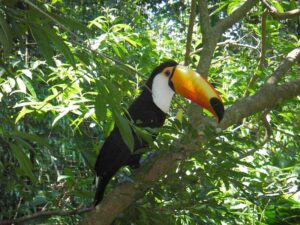
Conclusion
Characteristics of tropical rainforest ecosystem are;
1. Warm-Humid Climate
2. High Precipitation
3. Complex Vegetative Structure
4. Low-Fertility Acidic Soil
5. High Biodiversity
References
1). de Souza, J. J. L.; Fontes, M. P. F.; Gilkes, B.; Costa, L. M.; de Oliveira, T. S. (2017). "Geochemical Signature of Amazon Tropical Rainforest Soils." Revista Brasileira de Ciência do Solo 42(17). Available at: https://doi.org/10.1590/18069657rbcs20170192. (Accessed 2 June 2023).
2). Kastolani, W. (2018). "How to Conservate in Situ and Ex Situ Community Based Biodiversity Park in Sumedang Regency of West Java Province?" IOP Conference Series Earth and Environmental Science 145(1):012091. Available at: https://doi.org/10.1088/1755-1315/145/1/012091. (Accessed 2 June 2023).
3). Lopes, S. F.; do Vale, V. S.; Schiavini, I.; Júnior, J. A.; de Oliveira; A. P.; Arantes, C. (2014). "Canopy stratification in tropical seasonal forests: How the functional traits of community change among the layers." Bioscience Journal 30(5):1551-1562. Available at: https://agris.fao.org/agris-search/search.do?recordID=DJ20220209831. (Accessed 2 June 2023).
4). Madueke, C. O.; Okore, I. K.; Maduekeh, E.; Onunwa, A. O.; Okafor, M.; Nnabuihe, E. C.; Nwosu, B.; Jennifer, N. C.; Tochukwu, N. V. (2021). "Characterization and land evaluation of three tropical rainforest soils derived from the coastal plain sands of southeastern Nigeria." Agro-Science 20(2):25-36. Available at: https://doi.org/10.4314/as.v20i2.5. (Accessed 2 June 2023).
5). Quinto, H.; Moreno, F. (2015). "Precipitation effects on soil characteristics in tropical rain forests of the Chocó biogeographical region." Revista Facultad Nacional de Agronomía Medellín 69(1):7813-7823. Available at: https://doi.org/10.15446/rfna.v69n1.54749. (Accessed 2 June 2023).
